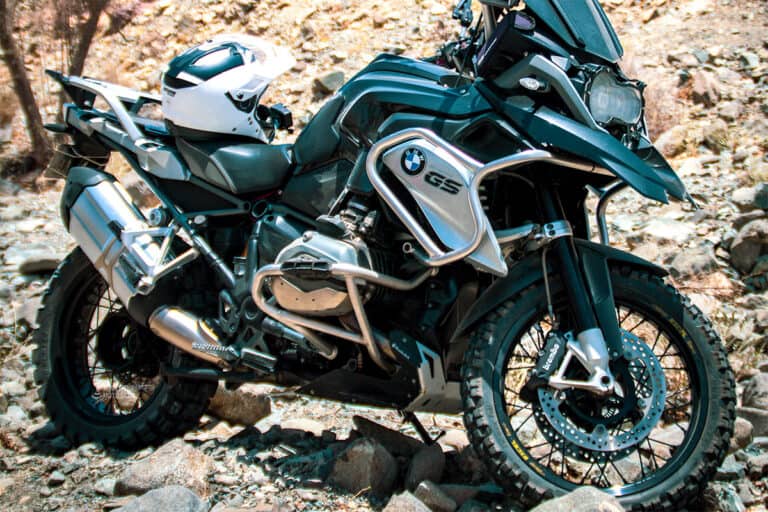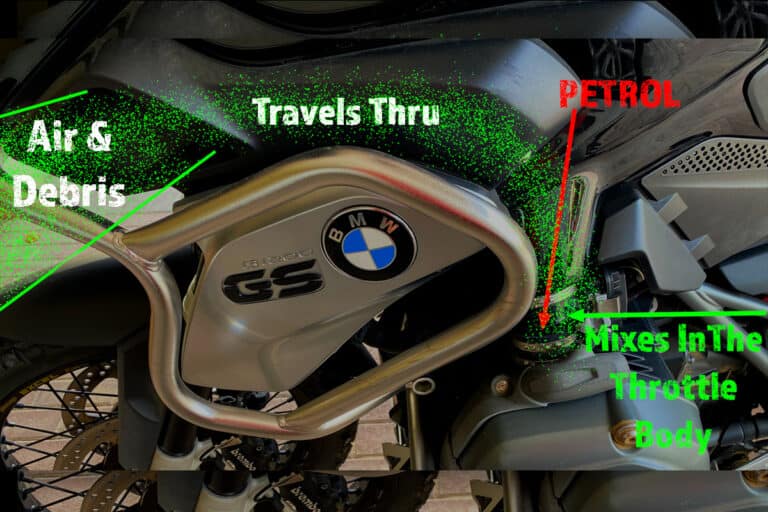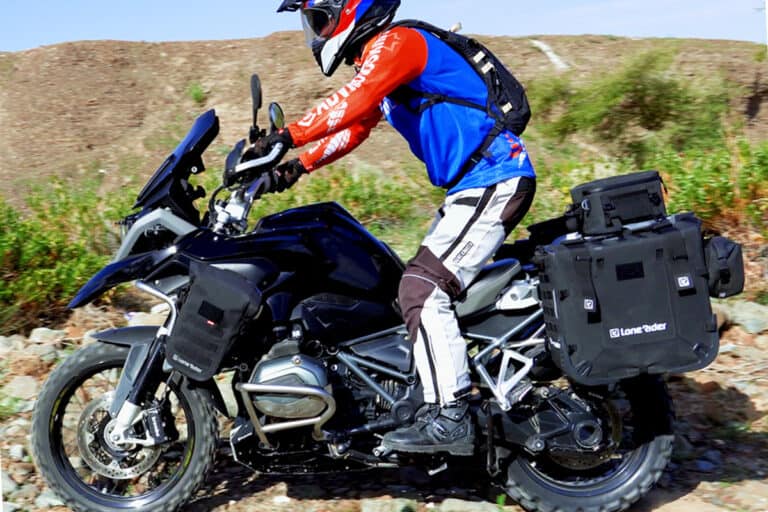Off-Road Motorcycle Hydration and Dehydration FAQs
Mid-ride water breaks are not simply about cooling off after a challenging stretch of trail. Water consumption during an off-road motorcycle adventure is about keeping your body hydrated. Our brains are approximately 75% water, and our bodies are over 60%. Replenishing this water as it is used is a must!
Water is to a motorcycle rider as fuel is to the bike. Hydration before and during an off-road ride keeps us alert, focused, and confident. Post-ride hydration supports recovery and helps ensure we are physically prepared to ride the next day. Miss this step, and both your ride and your health are at risk.
When you’re out on the trails, the last thing you want to worry about is whether or not you’re drinking enough water. This article will answer some motorcycle riders’ most common questions about hydration and dehydration. We’ll also provide some tips for staying hydrated during your next off-road motorcycle adventure!
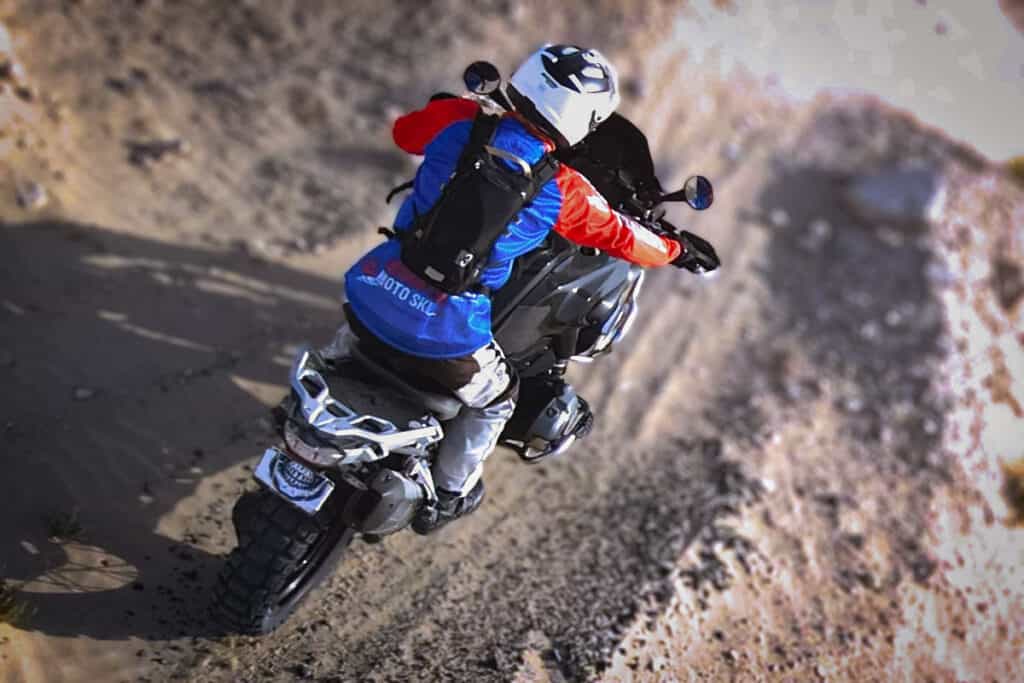
This post may contain Affiliate Links. Please see our Privacy & Disclosure Policy for more details.

Top-quality gear for your next adventure
Used and recommended by ADVMotoSkillZ
Does motorcycle riding make you dehydrated?
Motorcycle riding will cause dehydration regardless of weather conditions. While it is true that excessive sun, heat, or humidity will speed up the dehydration process, it happens in all weather.
Off-road riding is a physically demanding activity that burns a lot of calories. The longer our motorcycle ride is, the warmer and sweatier our bodies become. The act of sweating dehydrates us as we progress in our journey. Direct exposure to the wind quickly evaporates any moisture build-up on exposed skin, including the eyes and mouth/lips.
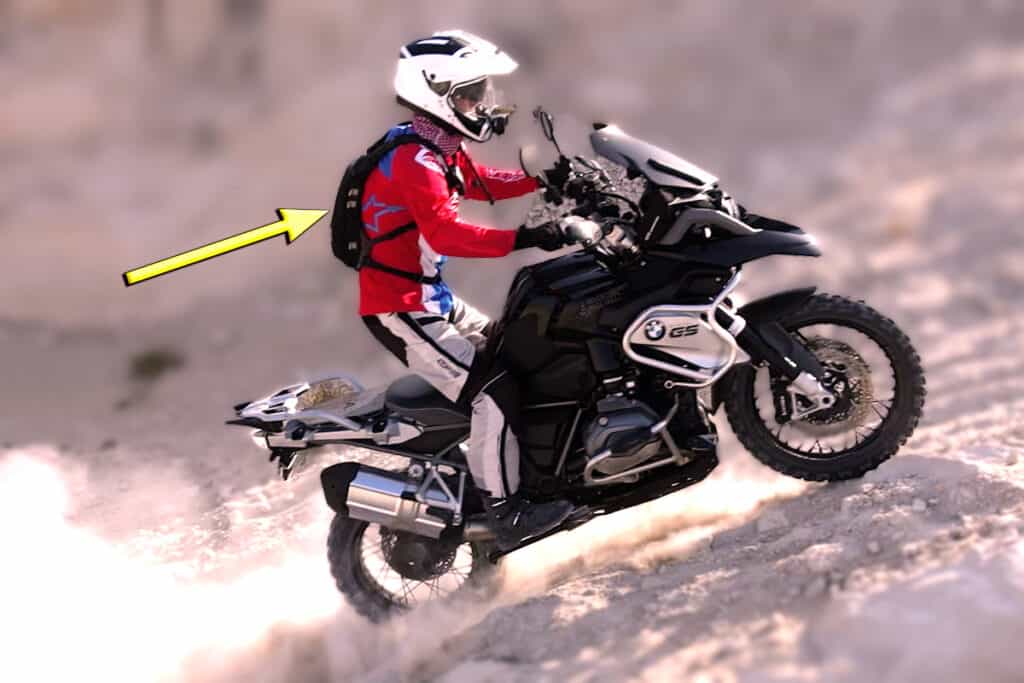
What are the effects of dehydration on a motorcycle rider?
“Dehydration occurs when you use or lose more fluid than you take in, and your body doesn’t have enough water and other fluids to carry out its normal functions.”
Mayo CLinic Website
We use water in our body to transport nutrients and oxygen, lubricate joints, and assist the kidneys in removing waste products. We lose water throughout the day via sweat, urine, and bowel movements (source).
When we hit the trails for a few hours or a few days, our bodies need to use more water to meet the added demands of motorcycle riding. Additionally, we will lose more water than usual due to excess sweating.
By failing to replace the water being used or lost, your body will slowly begin prioritizing water needs. As a result, less water means less functionality.
According to the Mayo Clinic, early dehydration symptoms may include:
- feeling thirsty
- dizziness or a lightheaded feeling
- dry mouth
- muscle tiredness
- sleepy feeling
- having dark-colored or strong-smelling urine
- passing urine less often than usual
Motorcyclists often miss these early warning signs because they believe it is “normal” to feel thirsty, tired, or sore due to the activity. While that may be true, dehydration will bring these problems on faster and with greater intensity.
As dehydration worsens, additional symptoms may include:
- headache
- mental confusion
- extreme fatigue
- weakness
- dry cough
- high heart rate but low blood pressure.
- loss of appetite but maybe craving sugar.
- muscle cramps
- heat intolerance or feeling cold
- constipation
- feeling of anxiousness
If you are a motorcycle pilot, as these symptoms evolve, you place yourself and everyone around you at risk. Poor decision-making coupled with muscle weakness is a recipe for disaster atop a 600-pound bike.
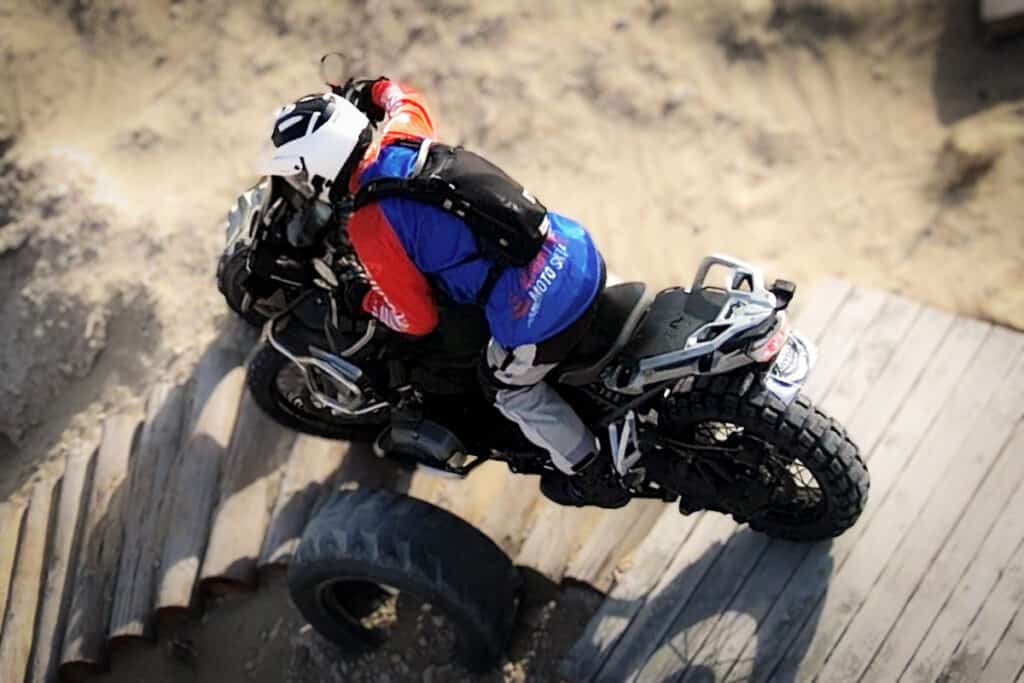
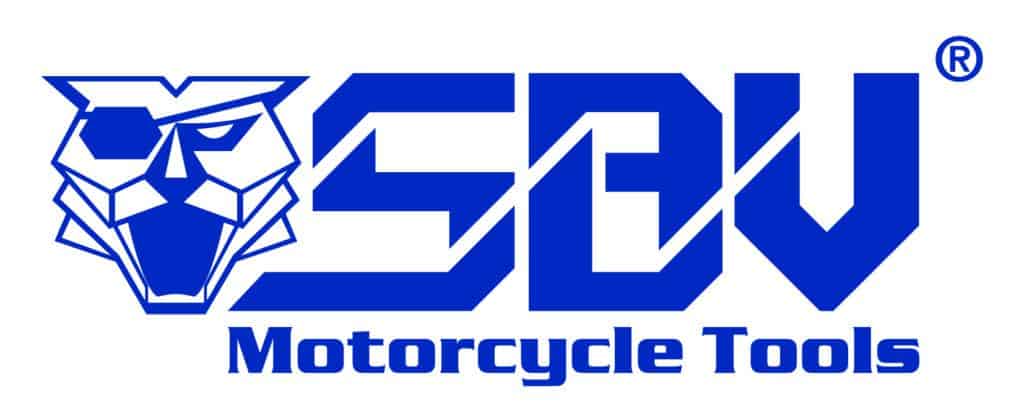
Innovative Motorcycle Tool Sets – Compact & Reliable
Used and recommended by ADVMotoSkillZ
What are the benefits of motorcycle hydration when riding off-road?
According to Havard University, USA, drinking enough water each day is crucial for:
- regulating body temperature
- lubricating joints
- preventing infection
- delivering needed nutrients throughout the body
- keeping organs functioning properly
- better sleep
- improved cognition (thinking better)
- happier mood
I don’t know about you, but I want all of those things when riding my bike off-road! If hydrating throughout my ride can help to keep my reaction time on point, that translates into a safer (and more fun) ride. Making quick and accurate decisions out on the trails means the difference between a bad fall and a beautiful adventure.
The benefits of hydration when riding a motorcycle are too many to count. But all of the reasons boil down to this:
Proper hydration keeps your body and brain functioning at their best so you can concentrate on enjoying a safe and exciting ADV motorcycle adventure.
How do you stay hydrated while riding your motorcycle all day?
One of the best ways to stay hydrated on a ride is to begin hydrating ahead of time. Start your morning with one or two big glasses of water. Do not skip this step simply because you want to avoid needing a pee-break early in the trip. We all wake up dehydrated after 6-9 hours of sleep, so early morning water consumption is good practice for everyone.
There are 3 common methods of hydrating throughout a day of riding:
Bare minimum hydration – These riders plan stops along the journey to buy water and take breaks. Rest stops and convenience stores act as hydration stations in this method. While this bare minimum approach is better than nothing, it has some downsides.
Your water consumption will be limited to the number of shops available along your route. So if you are thirsty or start noticing signs of dehydration, you need to wait to find a store. Meanwhile, dehydration progresses, and you place yourself at increased risk.
Also, if you plan to go off-road, this method limits you to drinking water only before or after the ride. This is a highly unsafe practice and will become a significant challenge in the case of mechanical issues or personal injury when off-road.
Carry bottles on the bike – Some riders take advantage of the luggage space available on ADV bikes to throw a couple of water bottles onto the bike. This option is far superior to the previous one mentioned.
You are preparing yourself ahead of time by carrying your water on the bike. There is peace of mind in knowing your hydration needs are planned adequately so you can focus on other aspects of the ride.
While those who pack up water bottles should be commended, this method has one major drawback. If the bottles are in your luggage, you only drink water during riding breaks. This creates a scenario where you have limited hydration opportunities, leaving you at risk for dehydration.
Despite your best calculations and packing up plenty of water onto the bike, if half of those bottles are still full when you get home, you became dehydrated during the ride.
Best-practice motorcycle hydration – A hydration bladder backpack is the best hydration method when on your motorcycle. These can be purpose-made for hydration, or you can get a backpack that doubles for hydration and storage.
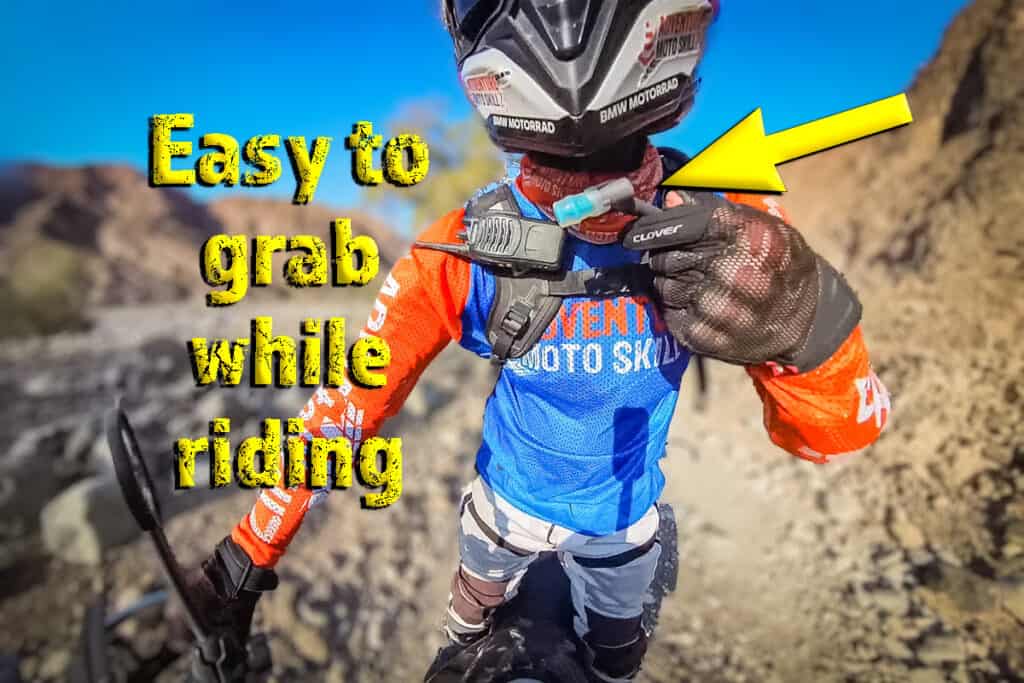
Having the water directly on your body gives you access to hydrate at any time. There is no need to stop at a store or wait for the next riding break. These packs allow you to drink as you ride, so dehydration never becomes a problem again.
How do you use a hydration pack?
I use a Kriega Hydro-3 for most day rides. It is comfortable to wear and easy to clean. Check out this full video on proper use:
For longer trips when I need a bit of storage space for things like extra clothing layers, the Lone Rider Overlander Bag provides ample backpack storage and it comes with a handy beavertail compartment that holds a 3-liter hydration bladder. Check that one out here:
Hydration pack tips:
- Purchase after-market bite valves
- Purchase an insulation tube cover if you ride in hot weather
- Make ices cubes in silicon muffin trays so the larger-sized cubes last longer
Safety
Another added benefit I have experienced while wearing a hydration pack is extra protection for my back. I have had a few unexpected dismounts that involved a roll or two. Having the extra cushioning of water on my back helped to soften the blow. I always wear body armor when riding, but having that water bladder makes me feel even more confident.
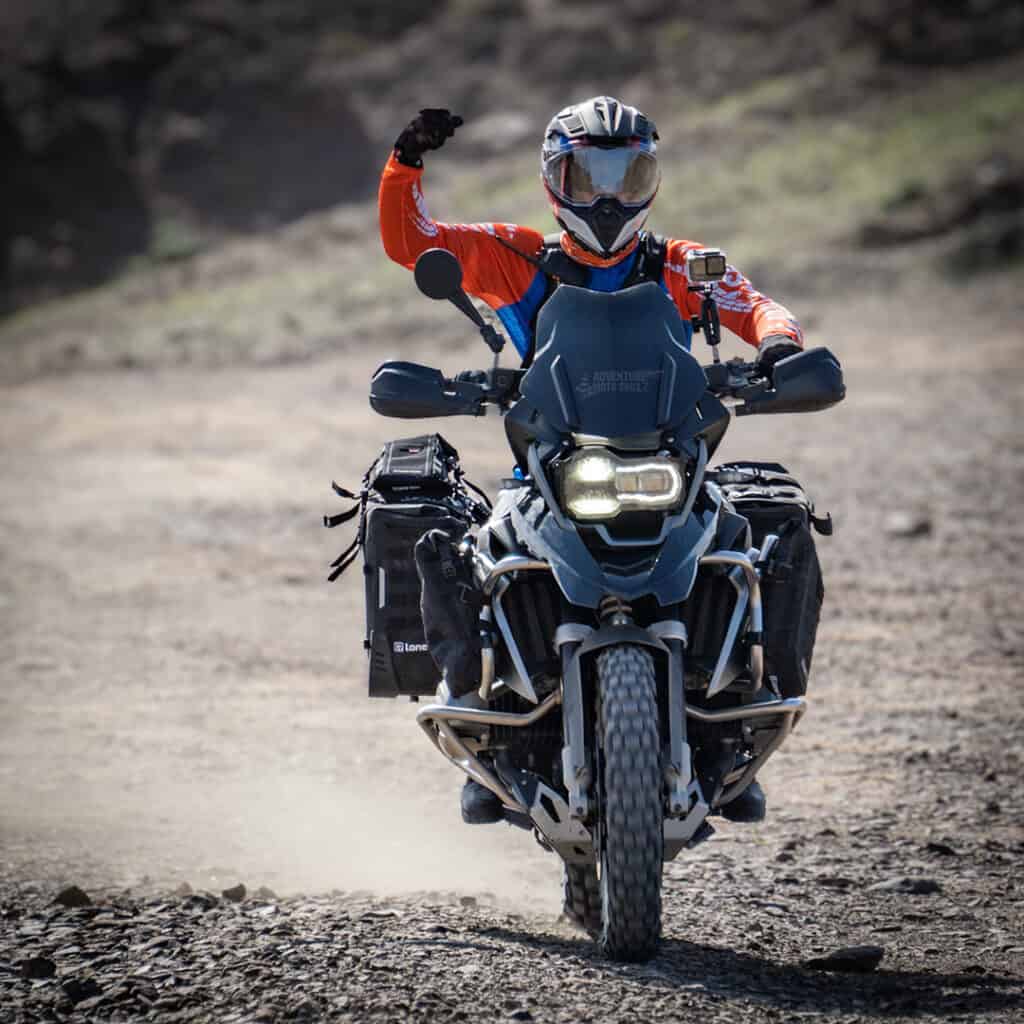
About the Author
Coach Mike is a Certified Off-Road Motorcycle Instructor & founder of ADVMotoSkillZ.
Riding tips from ADVMotoSkillZ reach thousands of international riders daily through social & blogs.
Click here to learn more about Mike’s motorcycle evolution from a Harley road rider to finding his true passion for off-road riding on a BMW 1200 GS.
If you would like to send Mike a quick message or invite him to provide training at your local facility, then visit the contact page here.


